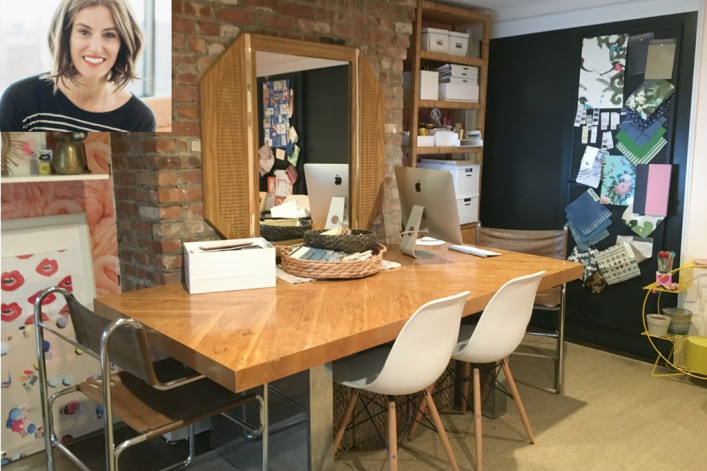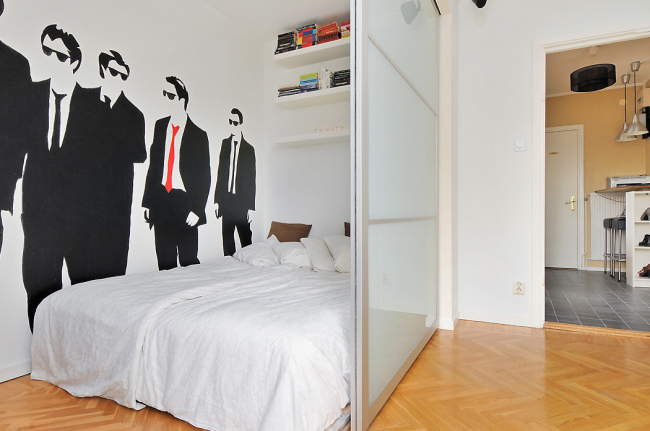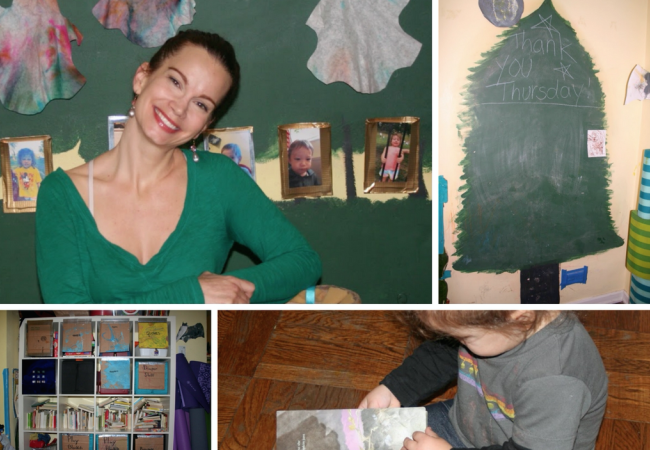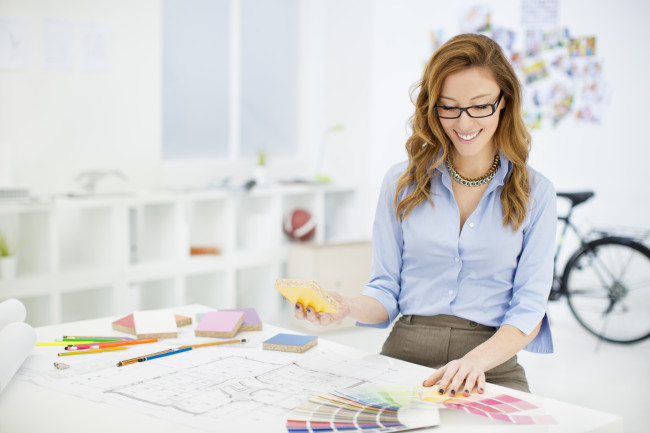Running an interior design business from home has its ups and downs
Home Work, a new column for Brick Underground, goes inside the homes of New Yorkers who are both working and living in their apartments. "How do they make it work?" you might ask. Well, we find out. Casey DeBois, this week's subject, runs DeBois Design out of her West Chelsea home.
In seven years since starting her business, DeBois Design, interior designer Casey DeBois (shown below) has worked out of three different apartments. Her last one, on the 75th floor of the Frank Gehry-designed New York by Gehry building, stands in stark contrast to her current spot: a 1,600-square-foot duplex in a townhouse in West Chelsea. Upstairs is the kitchen, dining room, and living space, and the ground floor houses two bedrooms, one of which she uses as an office. The office opens out to a patio and a yard, and there is a hanging chair and seating area on the patio, "which, when it is nice out, we use as an extension of the space," says DeBois.
Her personal style, of course, is on display for clients to see. She tells us she tends to gravitate toward "one-of-a-kind" pieces with a particular penchant for vintage, and avoids big-box stores for the most part, choosing instead to estate sales or vintage shops outside the city. "There isn't one piece in my house that's from a big box store," she says.
We talked to her about how she pulls off a work-life balance, eking out an office space when you don't have an extra bedroom and much more:
As a designer, I'd imagine that it's important for your apartment decor to sufficiently expresses your style.
Yes, it reflects my favorite things. In a way, it’s a good way to show off my style and I like to show off my place. My personal style is more eclectic, though, whereas some of my clients might be more refined.
Is that nerve-racking to you?
No, It’s nice for them to see my space. Each client’s space is different, and usually I'm bringing their aesthetic into a space not mine. I feel like my home is a direct representation of me, so it's not unlikely that there is always an array of flowers, and the space is meticulously organized. I also think it is conducive to a happy work environment since I work from home, that everything is neat — not just in my office.
You live in a building with a private landlord as opposed to a management company. Has your landlord ever objected to you having clients come in and out?
No, I think he’d be more concerned with my painting and wallpaper to be honest. My landlords are great, and we were completely up front with them about using the second bedroom as an office. They’ve been incredibly supportive and have even allowed us to do some renovations to the space.
What are some of the best parts of working from home?
The best parts are that you have so much flexibility (I can move from work to home life easily), and you can be super-productive. In office enviroments, there are a lot of distractions. There’s the small talk and the gossip. I think sometimes even my employees (I have two who come in every day) are surprised at how focused we can be by working at home.
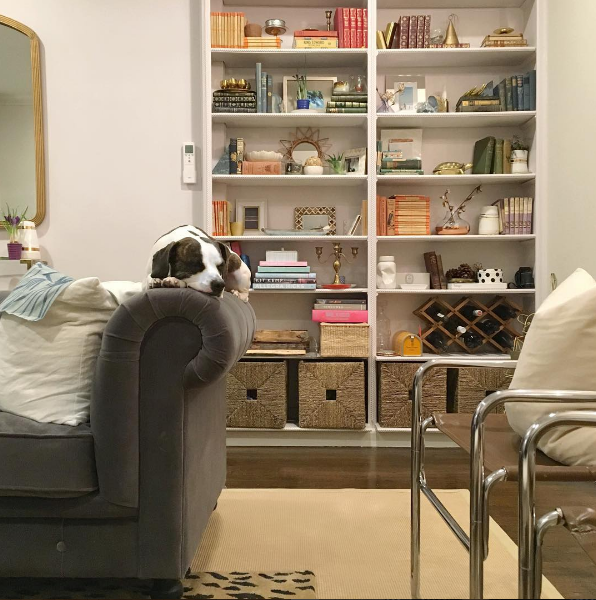
What are some of the downsides?
Ideally, I’d like to keep my areas separate—like functions with functions, as Marie Kondo says. Keeping the office solely an office is hard. You'll often find fabric swatches on the stairs and throughout the whole apartment.
Would you prefer to have an office outside the home if you could?
I prefer working from home. It’s just the most efficient use of my time. I go to clients' homes and to showrooms a lot, so there's a lot of back and forth and this really cuts back on my commuting time.
The fact that you're out of the office a lot probably helps, too, right?
Yes, that’s huge. We are often in and out, picking up samples, accepting deliveries, etc. We all work from a communal (Roger Sprunger) table, and very rarely is everyone here at once.
How have your home offices evolved over the past seven years?
I've progressed from working from my dining room table from my one-bedroom apartment to this one. In the last apartment, I had an amazing view from the 75th floor, but faced the door. That's a feng shui principle, that your back shouldn't face the door. Also looking out all the time would have been distracting.
I think the most important thing, whether you have a separate room to work or not, is having a dedicated space—having all of the stuff you need in one space. I think it’s also important to have a comfortable chair.
And organization is really key. I have lots of samples and client binders, but everything has its place. That said, there are times when the office get turned upside down. But we always clean up at the end of every day. It's important to start with a clean slate every day.
What if you don’t have an extra room for an office?
One good trick is to put your desk behind the sofa—we did that once. You can hide so much stuff behind a sofa. But I wouldn’t suggest working from your bed. You want something where you’re upright, and you want to get dressed and ready to go in the morning.
Do you think meeting clients from home changes the dynamic of your professional relationships?
I think so. A lot of clients stay friends, that probably would happen regardless of where my office is, but I like to think that they get to know me better by being in my home. It feels more natural to crack open a bottle of wine when I have clients meet me in the evenings.
Does the fact that you have two floors help?
The set up works well. To be honest, we usually hold meeting upstairs at my dining room table, not where the bedroom/office is. It feels more comfortable that way.
You mention that you love one-of-a-kind pieces. Where would you suggest our readers find these?
Chairish, Furnish Green and Etsy are all great. Goodwill can be really good, too.
We'd have to imagine that space is a major issue for your clients. Any tips for fellow New Yorkers in the same predicament?
It’s important for things to be multi-purpose—coffee tables with built-in storage (like a trunk, for example), or a bench that can be used as a table or seating area. Our coffee table has a dining room tabletop so we can use it for that I like consoles that double as desks, too. Ottomans or footstools can be used for side tables or seating.
















